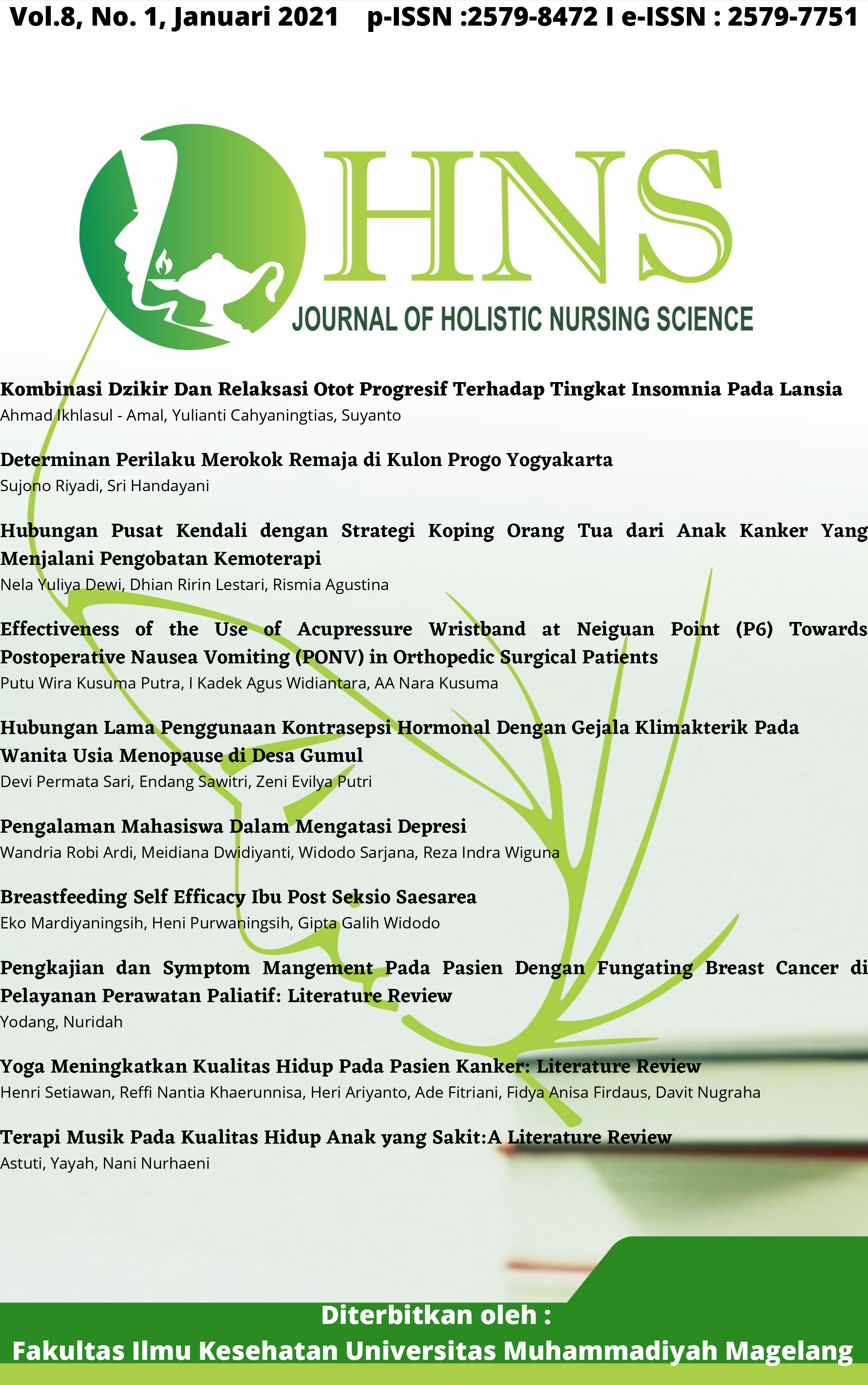Pengkajian dan Symptom Mangement Pada Pasien Dengan Fungating Breast Cancer di Pelayanan Perawatan Paliatif: Literature Review
Main Article Content
Abstract
Currently, cancer includes breast cancer is a predominant disease treated in palliative care services. Breast cancer incidence increased significantly during the last decade and can progress to a late or advanced stage. At this advanced stage, the incidence of the fungating wound occurs in 5-10% of breast cancer patients. The study aims to identify assessment and symptoms management of fungating breast cancer in the palliative care setting. This study applied a literature review method. Searching for articles using 4 journal databases including DOAJ, Google Scholar, Proquest, and Science Direct. 17 articles that met the inclusion criteria of the study. The literature review identifies that the assessment tools are holistic assessment methods, wound assessment charts, and time framework assessments. The major symptoms are mal-odor, pain, exudation, peri-wound maceration and bleeding, psychological and spiritual issues. The studies, which focus on assessment and symptoms management of fungating breast cancer was limited. This affects the comprehensiveness of the review study. Investigation on quality of life among fungating breast cancer patients shortly is needed.
Downloads
Article Details

This work is licensed under a Creative Commons Attribution 4.0 International License.
Authors who publish their articles in JHNS retain full copyright of their work. JHNS does not require authors to transfer their copyright to the journal or Universitas Muhammadiyah Magelang as the publisher. The authors grant JHNS a license for the first publication.
